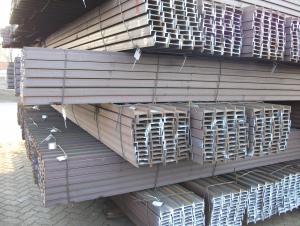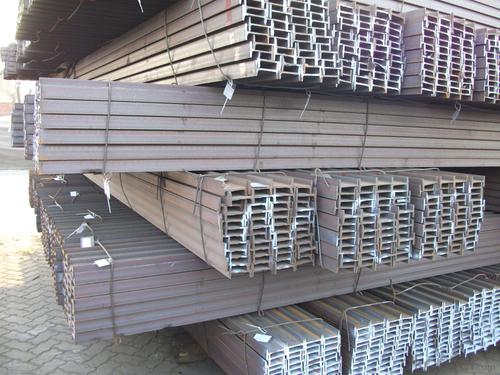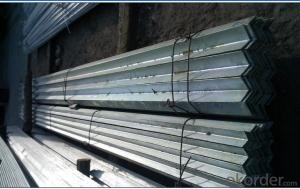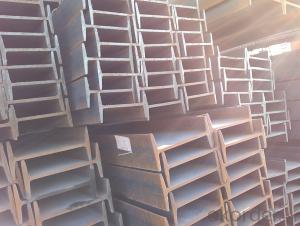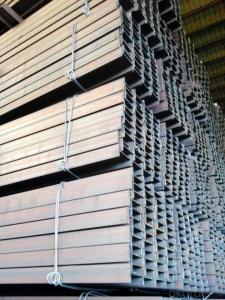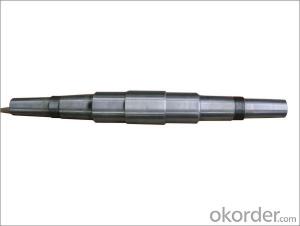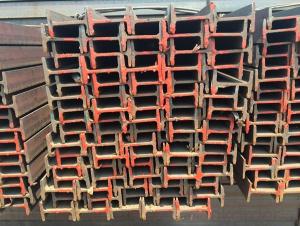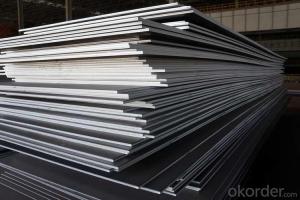Hot Rolled IPEAA Beam High Quality EN Quality
- Loading Port:
- China Main Port
- Payment Terms:
- TT or LC
- Min Order Qty:
- -
- Supply Capability:
- -
OKorder Service Pledge
OKorder Financial Service
You Might Also Like
Product Applications:
1. structure construction and electronic tower building construction
2. bridge, trestle, autos, brackets, machinery
3.It is widely used in various building structures and engineering structures such as roof beams, bridges, transmission towers, hoisting machinery and transport machinery, ships, industrial furnaces, reaction tower, container frame and warehouse etc.
.
Product Advantages:
OKorder's IPEAA Beam are durable, strong, and resist corrosion.
Main Product Features:
· Premium quality
· Prompt delivery & seaworthy packing (30 days after receiving deposit)
· Corrosion resistance
· Can be recycled and reused
· Mill test certification
· Professional Service
· Competitive pricing
Product Specifications:
1.Standard: EN10025, GB Standard, ASTM
2.Grade: Q235B, Q345B, SS400, ASTM A36, S235JR, S275JR
Alloy No. | Grade | C | Mn | S | P | Si |
Q235 | B | 0.12%-0.20% | 0.3%-0.7% | <=0.045% | <=0.045% | <=0.3% |
3.Length: 5.8M, 6M, 9M, 12M or as the requriements of the customers
4.Sizes: 80mm-200mm
Dimensions | |||||
h | b | s | t | Mass Kg/m | |
IPEAA80 | 80 | 46 | 3.20 | 4.20 | 4.95 |
IPEAA100 | 100 | 55 | 3.60 | 4.50 | 6.72 |
IPEAA120 | 120 | 64 | 3.80 | 4.80 | 8.36 |
IPEAA140 | 140 | 73 | 3.80 | 5.20 | 10.05 |
IPEAA160 | 160 | 82 | 4.00 | 5.60 | 12.31 |
IPEAA180 | 180 | 91 | 4.30 | 6.50 | 15.40 |
IPEAA200 | 200 | 100 | 4.50 | 6.70 | 17.95 |
Package & Delivery Terms of IPEAA Beam
1. Packing: it is nude packed in bundles by steel wire rod
2. Bundle weight: not more than 3.5MT for bulk vessel; less than 3 MT for container load
3. Marks:
Color marking: There will be color marking on both end of the bundle for the cargo delivered by bulk vessel. That makes it easily to distinguish at the destination port.
Tag mark: there will be tag mark tied up on the bundles. The information usually including supplier logo and name, product name, made in China, shipping marks and other information request by the customer.
FAQ:
Q1: Why buy Materials & Equipment from OKorder.com?
A1: All products offered byOKorder.com are carefully selected from China's most reliable manufacturing enterprises. Through its ISO certifications, OKorder.com adheres to the highest standards and a commitment to supply chain safety and customer satisfaction.
Q2: How do we guarantee the quality of our products?
A2: We have established an advanced quality management system which conducts strict quality tests at every step, from raw materials to the final product. At the same time, we provide extensive follow-up service assurances as required.
Q3: Can stainless steel rust?
A3: Stainless does not "rust" as you think of regular steel rusting with a red oxide on the surface that flakes off. If you see red rust it is probably due to some iron particles that have contaminated the surface of the stainless steel and it is these iron particles that are rusting. Look at the source of the rusting and see if you can remove it from the surface.
Images:
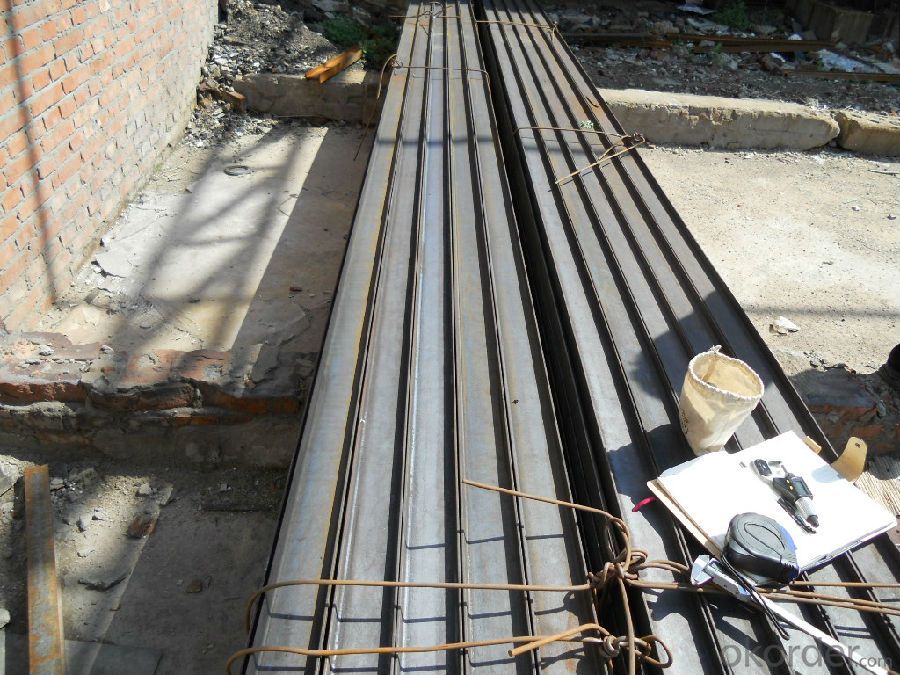
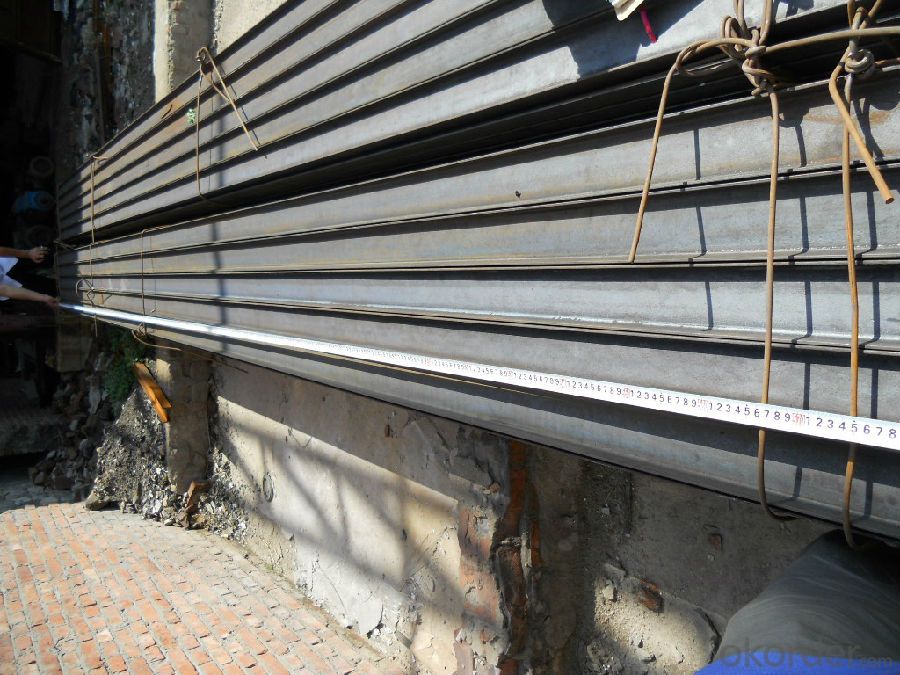
- Q: Bearing capacity of angle steel and channel steel
- According to the channel shape and can be divided into 4 kinds: cold bending equilateral channels, cold-formed non equilateral channel steel, cold rolled edge channels, the cold bending edge channels.According to the theory of steel structure, it should be stressed by the channel plate, that is to say, the channel should stand rather than lie prone.
- Q: How do steel angles compare to aluminum angles in terms of strength and durability?
- Steel angles are generally stronger and more durable than aluminum angles. Steel has a higher tensile strength and yield strength, meaning it can withstand greater forces and pressures without deforming or breaking. Additionally, steel is more resistant to corrosion and can maintain its structural integrity for longer periods compared to aluminum, which is more prone to oxidation and may weaken over time. Therefore, for applications requiring high strength and long-term durability, steel angles are a preferable choice over aluminum angles.
- Q: Can steel angles be used in the construction of warehouses?
- Yes, steel angles can be used in the construction of warehouses. Steel angles are commonly used as structural components in various construction projects, including warehouses. They provide strength and stability to the structure, making them suitable for supporting heavy loads and withstanding the demands of warehouse operations. Additionally, steel angles can be easily fabricated, installed, and connected, making them a cost-effective and efficient choice for warehouse construction.
- Q: How do steel angles contribute to the overall aesthetic of a structure?
- Steel angles can contribute to the overall aesthetic of a structure by adding visual interest and architectural appeal. They can be used to create sharp, clean lines, enhance the structural integrity, and provide a modern, industrial look. Additionally, steel angles can be customized to various sizes and finishes, allowing for creative design possibilities and the ability to match the desired aesthetic of the structure.
- Q: What is the maximum temperature steel angles can withstand?
- The maximum temperature that steel angles can withstand depends on the specific grade of steel used. Generally, carbon steel angles can withstand temperatures up to around 600-650 degrees Celsius, while stainless steel angles can withstand higher temperatures, typically up to around 900-1100 degrees Celsius. However, it is important to consult the manufacturer's specifications for the specific steel grade being used to determine its maximum temperature tolerance.
- Q: Are steel angles resistant to wind loads?
- Yes, steel angles are resistant to wind loads. Steel angles are commonly used in construction for their strength and stability. When properly designed and installed, steel angles provide structural support and can effectively resist the forces exerted by wind. The shape and geometry of steel angles provide rigidity and stability, making them capable of withstanding wind loads without significant deformation or failure. Additionally, steel angles can be reinforced and connected to other structural elements, further enhancing their resistance to wind loads.
- Q: Are steel angles suitable for scaffolding?
- Certainly, scaffolding can indeed utilize steel angles. With their strength and durability, steel angles serve as an excellent option for bolstering hefty loads and ensuring stability at construction sites. By effortlessly connecting and assembling them, a steady structure for workers to reach elevated levels during construction or maintenance endeavors can be promptly established. Moreover, the versatility of steel angles permits diverse configurations and adjustments to cater to distinct project needs. Overall, steel angles are deemed as a dependable and frequently employed element within scaffolding systems.
- Q: What are the different types of corrosion protection coatings for steel angles?
- For steel angles, there exists a variety of corrosion protection coatings that serve different purposes in safeguarding against corrosion. 1. Paint Coatings: Paint coatings are frequently employed for corrosion protection of steel angles. Acting as a barrier, they shield the steel surface from corrosive elements present in the surroundings. These coatings are typically applied in multiple layers and can be tailored to meet specific needs, such as resistance to chemicals or UV radiation. 2. Galvanizing: Another extensively used method for corrosion protection in steel angles is galvanizing. This process entails the application of a zinc layer to the steel surface through hot-dip galvanizing. By acting as a sacrificial anode, this coating provides excellent corrosion protection, sacrificing itself before the steel. Galvanized steel angles are commonly utilized in outdoor settings where exposure to moisture and harsh weather conditions is expected. 3. Powder Coatings: Powder coatings, which are applied as a dry powder and cured with heat, offer a durable and corrosion-resistant finish for steel angles. These coatings can be customized in terms of color, texture, and thickness, ensuring both aesthetic appeal and enhanced protection against corrosion. 4. Epoxy Coatings: Industrial applications often require the use of epoxy coatings when steel angles may be exposed to harsh chemicals or abrasive environments. These coatings form a robust and protective layer that resists corrosion, chemicals, solvents, and abrasion. They can be applied as a single layer or combined with other coatings for added protection. 5. Organic Coatings: In architectural applications where corrosion protection is necessary while maintaining an attractive appearance, organic coatings such as polyurethane or acrylic coatings are commonly used for steel angles. These coatings offer good resistance to weathering, UV radiation, and corrosion, ensuring the longevity of the steel angles. When selecting a corrosion protection coating for steel angles, it is crucial to consider the specific application, environmental conditions, and budget constraints. Seeking advice from corrosion specialists or coating suppliers can help determine the most suitable coating for the intended use.
- Q: 6# specification for angle iron
- 6# angle steel refers to equal angles, 60 * 60.
- Q: What are the different types of steel angles used in architectural applications?
- Architectural applications commonly utilize various types of steel angles. One example is the equal leg angle, also referred to as an L-shaped angle or L-bar. With legs of equal length forming a 90-degree angle, this angle is suitable for framing, bracing, and support. Another type is the unequal leg angle, also known as an L-shaped angle or L-bar with unequal legs. This angle accommodates versatile applications where different lengths are necessary, serving purposes such as edging, corner protection, and decorative accents. A third steel angle used in architectural applications is the bent angle. Achieved by bending a piece of flat steel to the desired angle, this type is often employed in architectural designs to create curved or unique-shaped structures. Such angles enhance aesthetics and add visual interest. Lastly, the perforated angle features holes punched along its length. This type finds widespread use in architectural applications requiring ventilation, drainage, or lightweight structural support. The perforations allow for airflow, water drainage, and the attachment of supplementary components. In conclusion, the assortment of steel angles available for architectural applications grants architects and designers a plethora of options to cater to specific project requirements. Whether prioritizing structural stability, aesthetic design, or functional purposes, these angles provide solutions that meet diverse needs.
Send your message to us
Hot Rolled IPEAA Beam High Quality EN Quality
- Loading Port:
- China Main Port
- Payment Terms:
- TT or LC
- Min Order Qty:
- -
- Supply Capability:
- -
OKorder Service Pledge
OKorder Financial Service
Similar products
Hot products
Hot Searches
Related keywords
